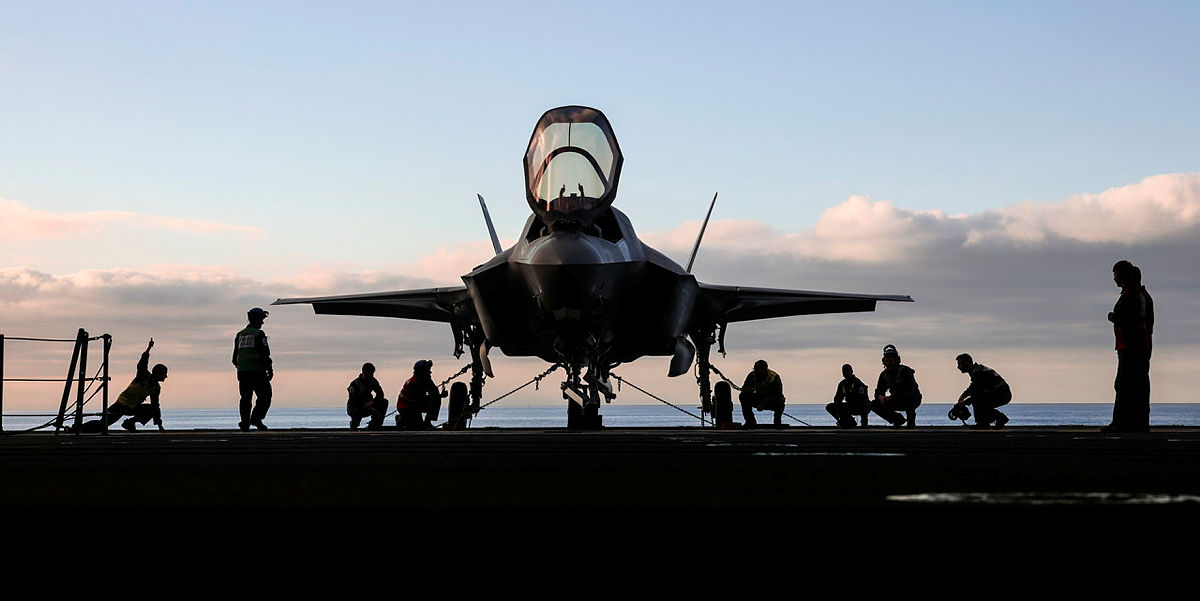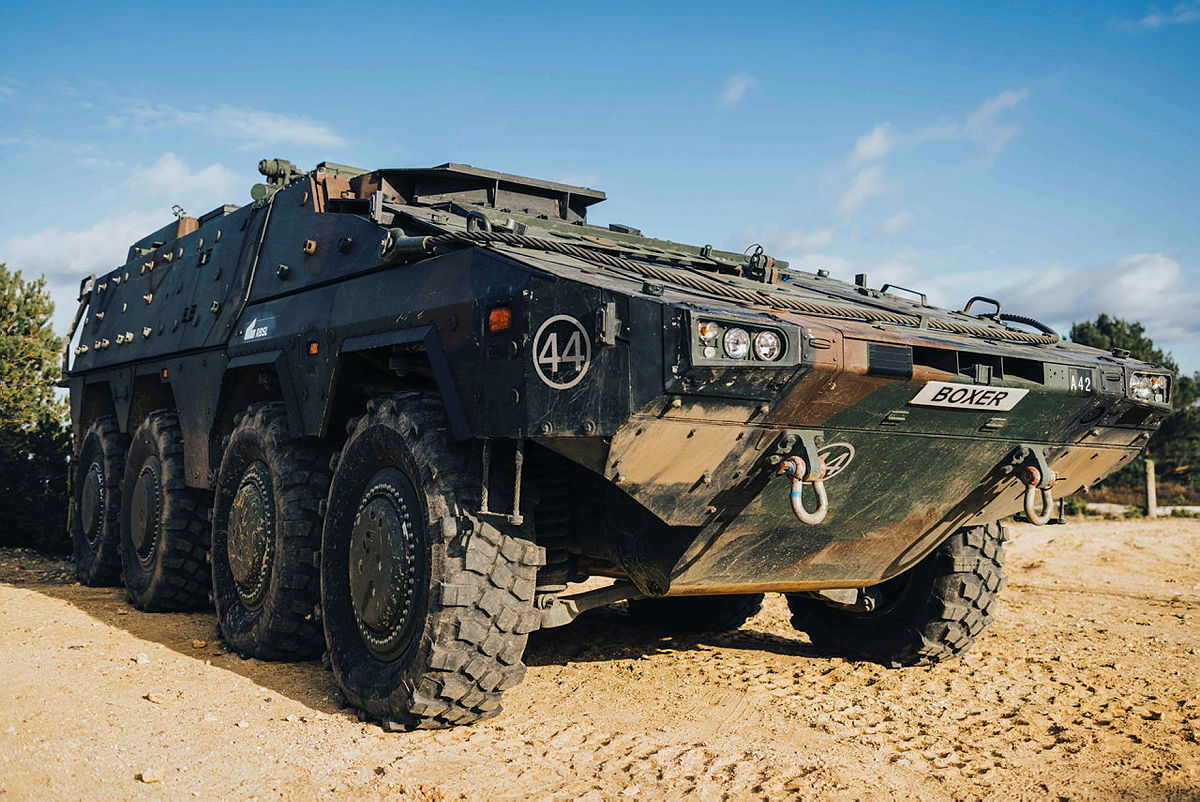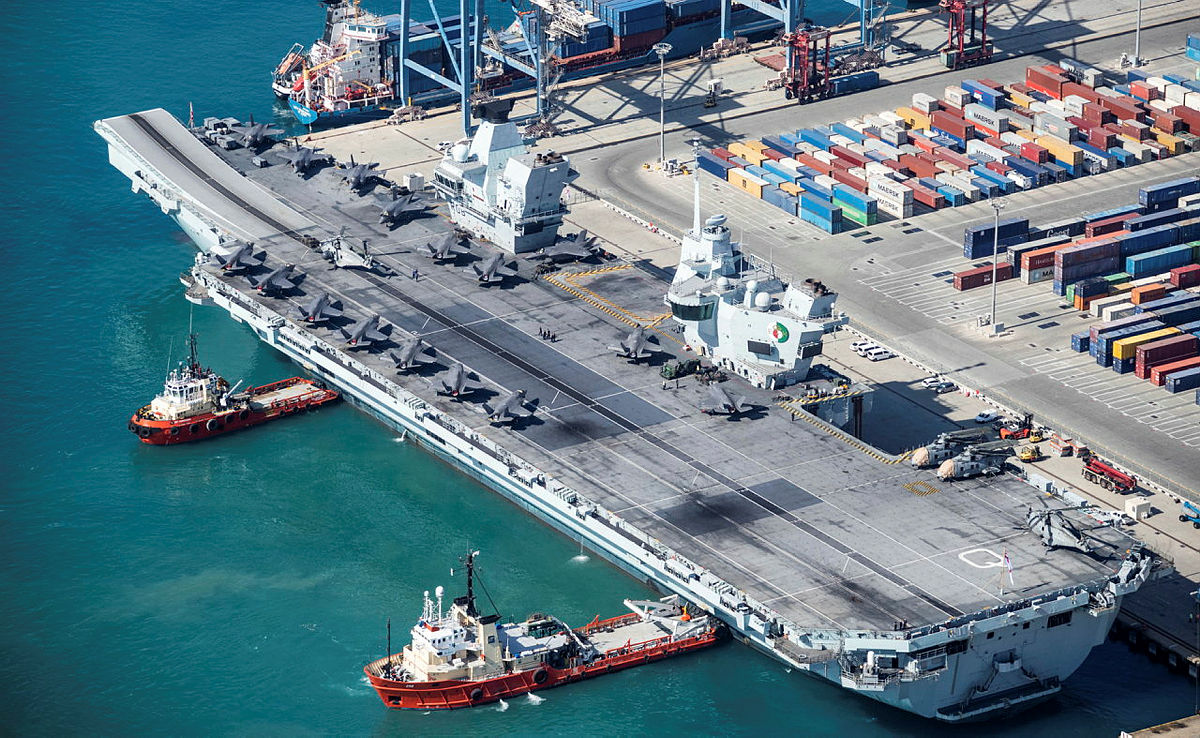DSEI 2021: Key UK military developments
29.07.21


29.07.21

Following a series of show cancellations over 2020 and into 2021, those working in defence and security will be pleased to hear that this year’s DSEI trade show will be going full steam ahead, showcasing some of the most innovative equipment across the sector. Social distancing measures are now lifted in the UK, so it was confirmed in May that a live iteration of the show is set to take place from 14-17 September at ExCel London.
While this is excellent news for people living in the UK, the show is likely to be somewhat limited in capacity given that this is an international show and certain travel restrictions are still in place. There is still expected to be a big focus on UK defence developments, however, so here we take a look at some of the latest UK defence and technology programmes!
Air
One of the biggest focuses currently for the UK and the air domain is the next-generation Tempest fighter programme. Defined as “the future of air combat”, Tempest is a highly-ambitious programme bringing together several industry partners that will not only introduce a brand-new fighter aircraft, but also a whole host of advanced subsystems that leverage areas such as big data, AI and cyber. The programme will also see the introduction of other supporting systems including unmanned aircraft known as “loyal wingmen” (see below).
At DSEI 2019 it was revealed that Italy had joined the Tempest programme, and in December 2020 a trilateral agreement between the governments of the UK, Sweden and Italy was signed for development of Tempest. On 29 July, it was announced that the UK MoD had awarded a £250m contract to industry to advance the design of Tempest, officially kickstarting the programme’s concept and assessment phase.
It’s likely that Tempest will once again be one of the key focuses for the UK government at DSEI 2021.
While the introduction of the sixth-generation Tempest remains some way off, the UK’s more immediate focus is the introduction of the Lockheed Martin F-35. The F-35 is a central player in terms fifth-generation airpower. It has three variants, the F-35A, B and C, and in addition to operation with the US Air Force, US Navy and US Marine Corps, there are eight international programme partners and six that are procuring it through Foreign Military Sales.
The UK is the only tier one partner for the programme, and is procuring the F-35B Vertical Take-off and Landing (VTOL) variant, which will be operated by both Royal Air Force and Royal Navy predominantly on the Queen Elizabeth-class aircraft carriers. Recent reports have indicated that the UK government is “absolutely confident” it will purchase additional F-35 aircraft above the 48 already on order. We may hear more on this at DSEI 2021.

Credit: Crown Copyright
Another key air programme for the RAF is its forthcoming Protector capability. Expected to begin entering service in 2023, the UK is set to replace its 10 in-service MQ-9 Reaper drones with an initial 16 new MQ-9B SkyGuardian drones that form the basis of the British Protector programme.
A pre-production example of SkyGuardian will operate from RAF Waddington from July, taking part in the Joint Warrior multi-national exercise. Notably, this will be certified to operate alongside manned aircraft in unsegregated airspace, and the government is rapidly pushing new plans through to complete this as part of the UK Airspace Modernisation Strategy.
A new ‘loyal wingman’ aircraft concept was boosted by a £30 million investment from the MoD in January 2021, meanwile, to be used by the RAF alongside its fighter fleets to provide unmanned offensive and electronic warfare assistance.
Awarded to Belfast-based Spirit AeroSystems, the contract will see a full-scale vehicle developed that is expected to be flown by the end of 2023. The hope for this aircraft – being developed under the MoD’s Project Mosquito – is that it could one day form part of the UK’s prestigious combat air system. The UAV design allows for the collaboration of modern software development practices and digital engineering, which will hugely reduce the amount of time required to build a demonstrator vehicle.
Land
It hasn’t been a great time for the British Army of late. The recent MoD Integrated Review published in March 2021 saw modernisation programmes such as the Warrior Capability Sustainment Programme cancelled and overall headcount reduced to one of its lowest levels in history. And it hasn’t got much better since.
In recent months it has come to light that one of the army’s key vehicle modernisation programmes, Ajax, has run into significant trouble with soldiers being injured due to excessive noise and vibration issues. A total of £3bn has already been spent on the programme and ministers have now publicly acknowledged that recent issues may not be resolvable, which could lead to cancellation.
Could we get more answers about the future of Ajax at DSEI 2021? What was once seen as one of the more stable vehicle programmes in the British Army modernisation plans now has an uncertain future.
But there could be a glimmer of hope for the army with the Boxer 8×8. As the name suggests, the Boxer is an 8×8 multirole vehicle that has rapidly grown in demand, demand that is expected to continue to grow over the coming years. Production for the first prototype of the UK’s 500-strong fleet began in Germany earlier in 2021, but most of the fleet will be built in the UK by main contractors Rheinmetall BAE Systems Land (RBSL) and WFEL.
As a versatile, armoured transport vehicle, several variants are currently being constructed, including: a troop carrier; a field ambulance; and a battlefield maintenance vehicle. The different variations in transport will allow troops to easily bring specialist operatives or equipment to any location where they might be needed.

Credit: Crown Copyright
Another key programme for the army is not on the ground at all, but rather in the air with the new ‘E’ variant of the workhorse Apache AH-64. The most advanced helicopter of the Apache series to date, the UK has purchased a fleet to replace the current AH-64D Apaches when they retire in 2024, and the first two E-models were delivered to the British Army in November 2020. This new model promises the most advanced engines and avionics seen in any Apache to date, while a maritime mode within the fire control radar allows pilots to access and assist any maritime operation.
Naval
The Type 31 frigate programme is part of the government’s military plan to improve the UK’s maritime defence over the next 20 years, with the first due to enter service in 2027. They are expected to have some of the most advanced weapon and sensor systems on frigates to date.
The Type 26 Global Combat Ship, meanwhile, will replace the RN’s remaining Type 23 frigates, but was designed with export in mind from the offset. Australia and Canada have committed to acquiring the vessel, both of which will benefit from industrial partnerships to build the frigates in the respective countries. The first of the Royal Navy City-class Type 26s, HMS Glasgow, is currently being assembled in Scotland and is expected to enter service in the latter half of the 2020s.
Meanwhile, the Queen Elizabeth-class aircraft carriers are arguably the standout fleet of the Royal Navy’s newest capabilities, leading the UK’s Carrier Strike Group. The group – led by flagship carrier HMS Queen Elizabeth – set off on its maiden deployment in May 2021, and has transitioned through the Mediterranean and Indo-Pacific to date.
At this year’s DSEI 2021, we could also hear more on the UK government’s ambitions to acquire three new Fleet Solid Support (FSS) vessels, which will provide vital support to amphibious task groups, including supplying food, ammunition and other provisions. A competition was announced in May, and the government has outlined that integration work would have to be carried out in the UK.
It’s also possible that we might see a refreshed National Shipbuilding Strategy, with the first edition published in 2017 having set out a vision for the UK to become a global leader in shipbuilding.

Credit: Crown Copyright
Space
Space will be high on the agenda for DSEI 2021 as the government seeks to leverage innovative space technologies for both commercial and military operations, and of course benefit from what is becoming a highly lucrative private sector. In November 2020, it was announced that the UK government had successfully acquired the satellite company OneWeb, which specialises in large LEO satellite constellations that provide connectivity around the globe.
The RAF has also been looking at novel ways to launch small satellites rapidly into space – called Project Artemis – without the need for large and expensive rocket launchers. It is working closely with Virgin Orbit, which has developed a rocket system that can be launched from underneath a commercial 747 aircraft. Virgin Orbit is likely to eventually operate from the SpacePort Cornwall, where construction has just begun with launches to begin next year.
Meanwhile, the UK Rosalind Franklin mars rover – due to launch in 2022 – is being developed by the British division of Airbus Defence & Space. A new parachute for the rover has recently finished a series of tests, meaning that exploration on Mars is one step closer. Unlike some other rovers, the Rosalind Franklin was created with the specific goal of attempting to uncover whether there is, or ever has been, life on Mars.
The UK Space Agency is the second largest European contributor to the ESA-Roscosmos ExoMars mission that includes the rover, having invested €287 million in the mission and £14 million on the instruments.
Technology
DSEI 2019 indicated that AI and autonomous technologies are becoming more and more embedded in defence and security work, and AI is now being used in British Army operations for the first time. The 20th Armoured Infantry Brigade is utilising a new AI engine that is providing soldiers with a deep analysis of surrounding environments and terrains. This type of operational material was the first of its kind used by UK troops and was specifically made by the MoD to work with army troops and the current way that they are operating.
We can expect to see many solutions on the DSEI 2021 exhibition floor this year that utilise emerging technology areas such as AI, machine learning, big data analytics and cyber.


Signatories of:


Members of:



Innovation House
Molly Millars Close
Wokingham
RG41 2RX